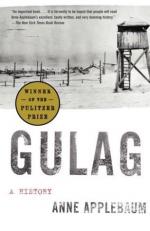|
This section contains 444 words (approx. 2 pages at 400 words per page) |

|
Part 1, Chapter 6: The Great Terror and Its AftermathSummary
1937 and 1938 are commonly known as the years of the Great Terror, when thousands were arrested. The concentration camps were transformed into places where prisoners were deliberately worked to death or killed in other ways. Stalin used this purge as a way to eliminate his rivals and enemies and terrorize the Soviet population. Many camp commanders of the Gulag were arrested and eliminated, along with leaders in the Communist party, members of the Red Army, and the families of individuals targeted as "counter-revolutionaries."
The concentration camps became harsher and more deadly. Prisoners "were no longer considered full citizens of the Soviet Union, if they were to be considered people at all," (p. 103). Food rations decreased and conditions in the camps worsened as more prisoners were arrested and sentenced. Fatalities...
(read more from the Part 1, Chapter 6: The Great Terror and Its Aftermath—Summary Summary)
|
This section contains 444 words (approx. 2 pages at 400 words per page) |

|




